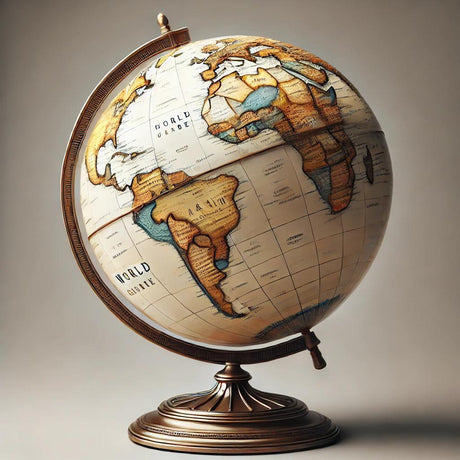
Globes have long been treasured for their ability to provide a three-dimensional representation of our planet. While often appreciated for their decorative appeal, globes are also powerful tools for education, particularly in the field of environmental science. Here's how globes can be used to explore and solve various questions in environmental science.
Understanding Ecosystems and Biomes
One of the fundamental aspects of environmental science is the study of ecosystems and biomes. A globe allows students and researchers to visualize the distribution of different biomes, such as forests, deserts, grasslands, and tundras. By examining the globe, one can understand how geographical features and climate zones influence the type of ecosystems found in different parts of the world.
Analyzing Climate Patterns
Globes are invaluable in studying climate patterns and changes. They provide a clear view of the Earth’s climatic zones, from the tropics to the polar regions. By examining these zones, students can better understand the distribution of weather patterns, ocean currents, and wind systems. This knowledge is crucial for predicting climate changes and their potential impact on different regions.
Investigating Environmental Changes
Environmental science often involves studying changes in the environment, such as deforestation, desertification, and melting ice caps. A globe helps in tracking these changes over time by providing a spatial context. Researchers can mark areas of concern and compare historical data with current observations to assess the extent of environmental changes.
Mapping Natural Resources
Understanding the distribution of natural resources, such as minerals, forests, and water bodies, is a key component of environmental science. Globes can be used to map these resources and analyze their availability in different regions. This information is vital for sustainable resource management and planning.
Examining Human Impact
Human activities have a significant impact on the environment, from urbanization to pollution. Globes help visualize the extent of human impact on different parts of the world. For example, students can use globes to identify regions with high pollution levels or areas affected by extensive land use changes. This visual aid supports discussions on environmental policies and conservation efforts.
Educational Benefits
Using globes in environmental science education offers numerous benefits. They provide a tangible way for students to engage with complex geographical and environmental data. The three-dimensional nature of globes helps in understanding the Earth’s structure and spatial relationships, which are often difficult to grasp through flat maps alone. Additionally, globes can be used in interactive lessons, making learning more engaging and effective.
Conclusion
Globes are more than just decorative pieces; they are essential tools for studying and understanding our planet. In the field of environmental science, globes provide valuable insights into ecosystems, climate patterns, environmental changes, natural resources, and human impact. By incorporating globes into educational and research settings, we can enhance our understanding of the Earth and promote sustainable environmental practices.
For more information on high-quality globes for educational purposes, visit Ultimate Globes.




